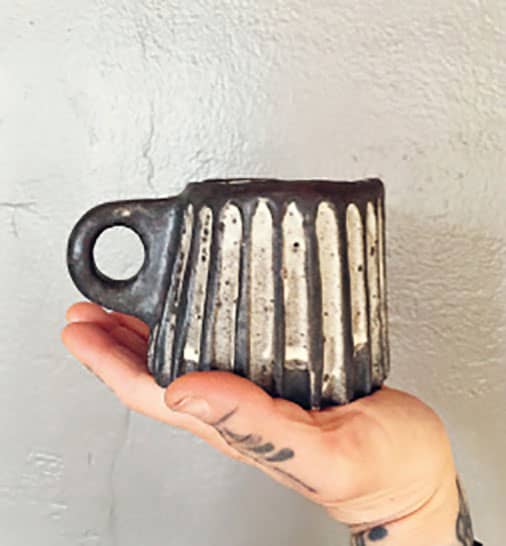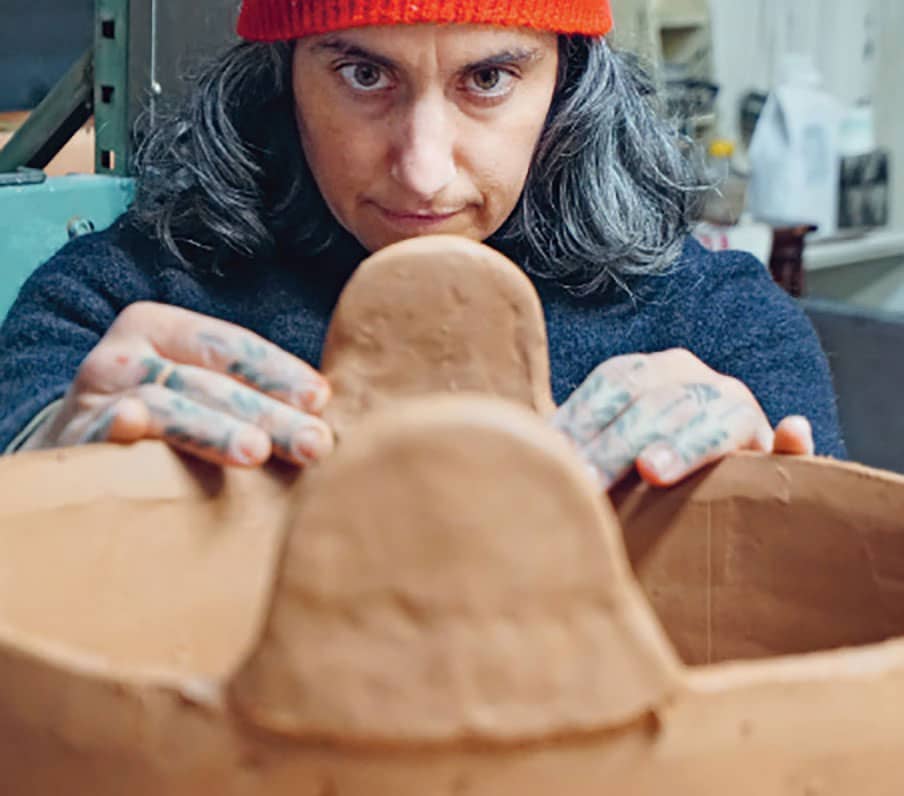My Winding Path to Studio Pottery
Welcome, I’m Melissa Weiss. I’m a studio potter in Asheville, North Carolina, where I run and work in an 8,000-square-foot warehouse housing twenty artists in various media. It’s been a long and interesting path getting here.
I took my first pottery class in the fall of 2004 when my daughter was five months old. I had never before worked with clay and had very little exposure to ceramics. Basically, I knew nothing. It was a beginning wheel-throwing class in Fayetteville, Arkansas, about an hour from Kingston, where I lived and owned a piece of land. The class wasn’t much, in terms of instruction or inspiration, and yet it turned out to be extremely significant—it exposed me to a medium I loved instantly. The class only lasted a few weeks, and it would be a year until I would get the chance to take another.
Six months later, I moved to Asheville, North Carolina, and in the fall of that year I took a pottery class at a local technical college, and then another at a nearby ceramics center. This time I got lucky—the class at the ceramics center was taught by the amazing Becca Floyd. Along with being a brilliant teacher, Becca conveyed such a convincing confidence in me and my pottery that it made me believe in it too.
In the spring of 2007, Becca presented me with the gift of a free workshop at the John C. Campbell Folk School. It was taught by Michael Hunt and Naomi Dalglish, and it transformed the way I saw and made ceramics ever after. The workshop introduced me to digging and working with wild clay, to using slips and glazes that are layered and sheer to show the layers of material underneath, and to the challenges and rewards of wood firing. At this point, too, I started learning about the wood-fire traditions of the humble potters of Korea and Japan, and the American potters who were influenced by these traditions. The path I had been following suddenly branched off in many new directions.
I joined a co-op called Clayspace in the River Arts district in Asheville that proved to be invaluable to my ceramics education. I now occupied a studio with a small group of potters who generously shared their knowledge, answered my never-ending questions, and participated in wood firings. There was a gallery in our studio, in which I was able to start selling my work.
In 2008, on a trip to Arkansas to visit my friends and my land, I dug a bucket of the sticky red clay to take home. I spent weeks testing different variations of recipes incorporating this wild clay until I came up with a clay body that was workable, durable, and aesthetically what I wanted. I’ve used this custom clay body that includes 25 percent of the clay I dig from my land in all my pots ever since.
Beginning in 2013, I had the opportunity to rent the warehouse where I currently work. It has enabled me to grow and be more efficient: I can make clay, make pots, and fire my work all in one place. I spend thirty to sixty hours a week in my studio. My boyfriend, Elijah Ferguson, quit his job in construction to run the pottery with me. We work in cycles: make clay, make glazes and slips, make pots, glaze and decorate pots, fire pots. In between is all the work it takes to run a small business.
“Everyone can take these methods, add what they bring to the craft, and make pots of their own.”

Over the past thirteen years I’ve collected and saved little pieces of knowledge, techniques, and recipes from every branch of my path of learning and built them into my own practice. I use a variety of methods, including carving, coil, slab construction, and combination techniques that I will show you in this book. I try to make pots that feel primitive and look modern by using a minimally processed wild clay body, thin slips, and ash glazes, and by leaving the marks of the maker. I don’t “fuss” over my pots. They’re not painstakingly perfected and honed. They’re meant to be inviting and used in daily life.
When I teach my classes, I find my methods are easily transferred to beginning potters. The pots and methods I use are not intimidating. Everyone can take these methods, add what they bring to the craft, and make pots of their own. Pottery is a humble craft that teaches many lessons. I’m grateful for what it’s given me.

Photo by Anna Toth

